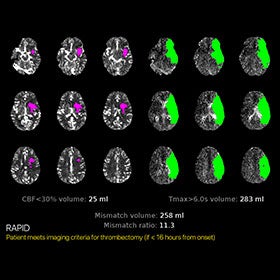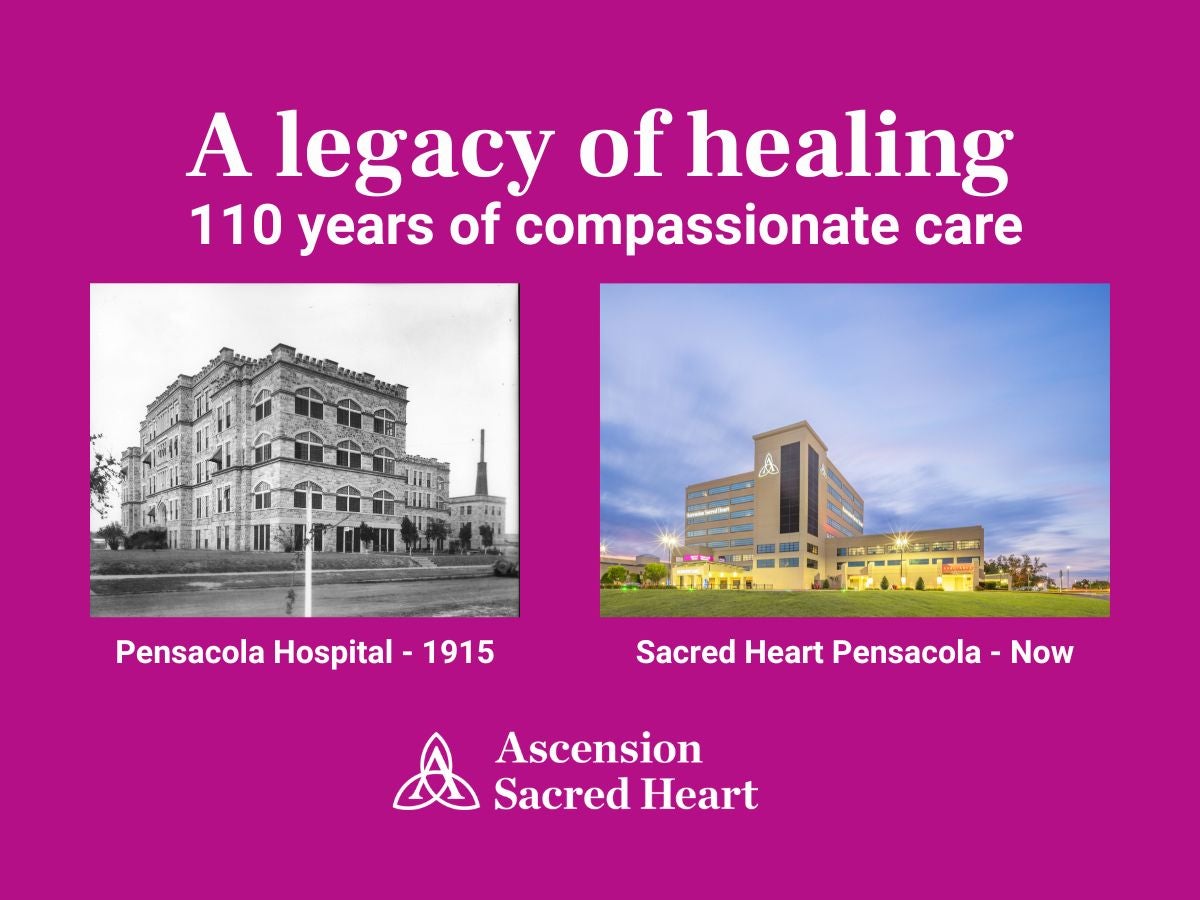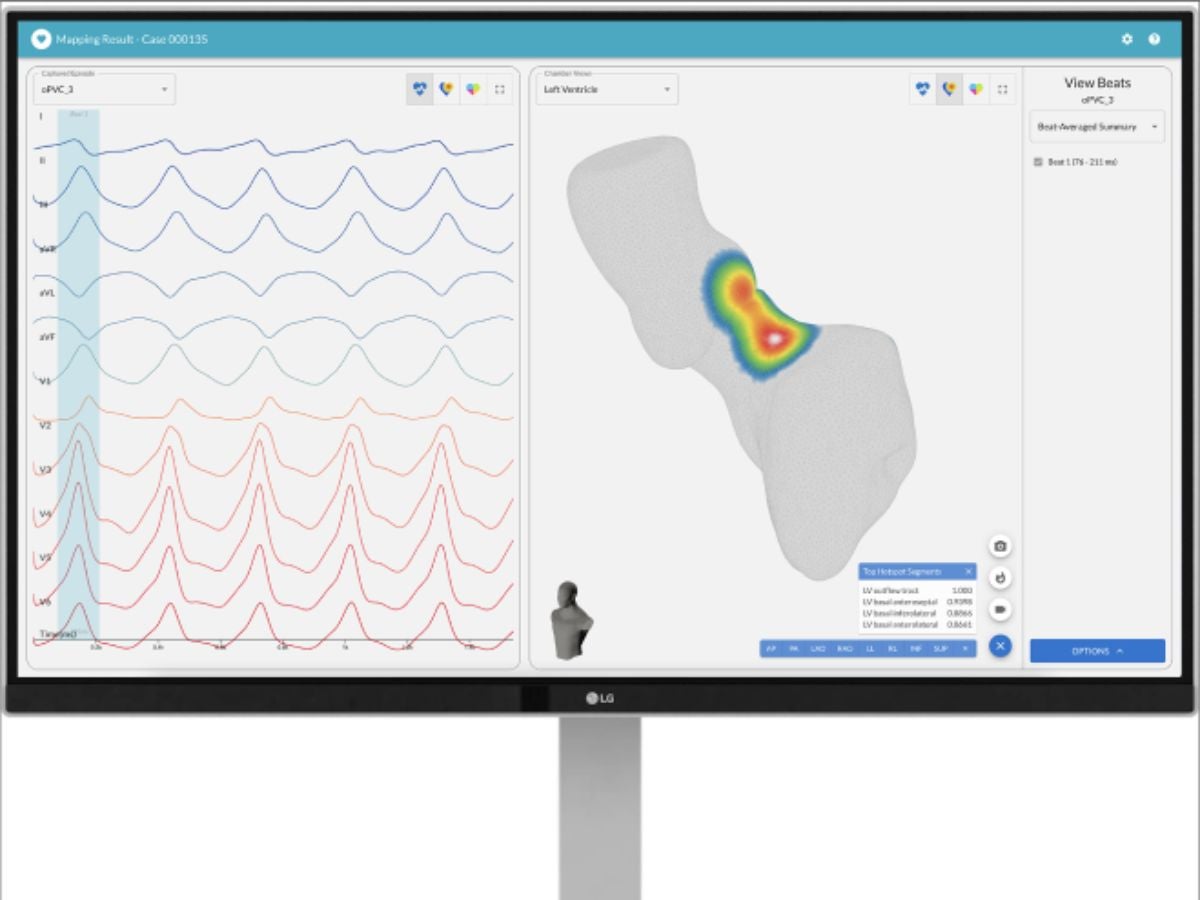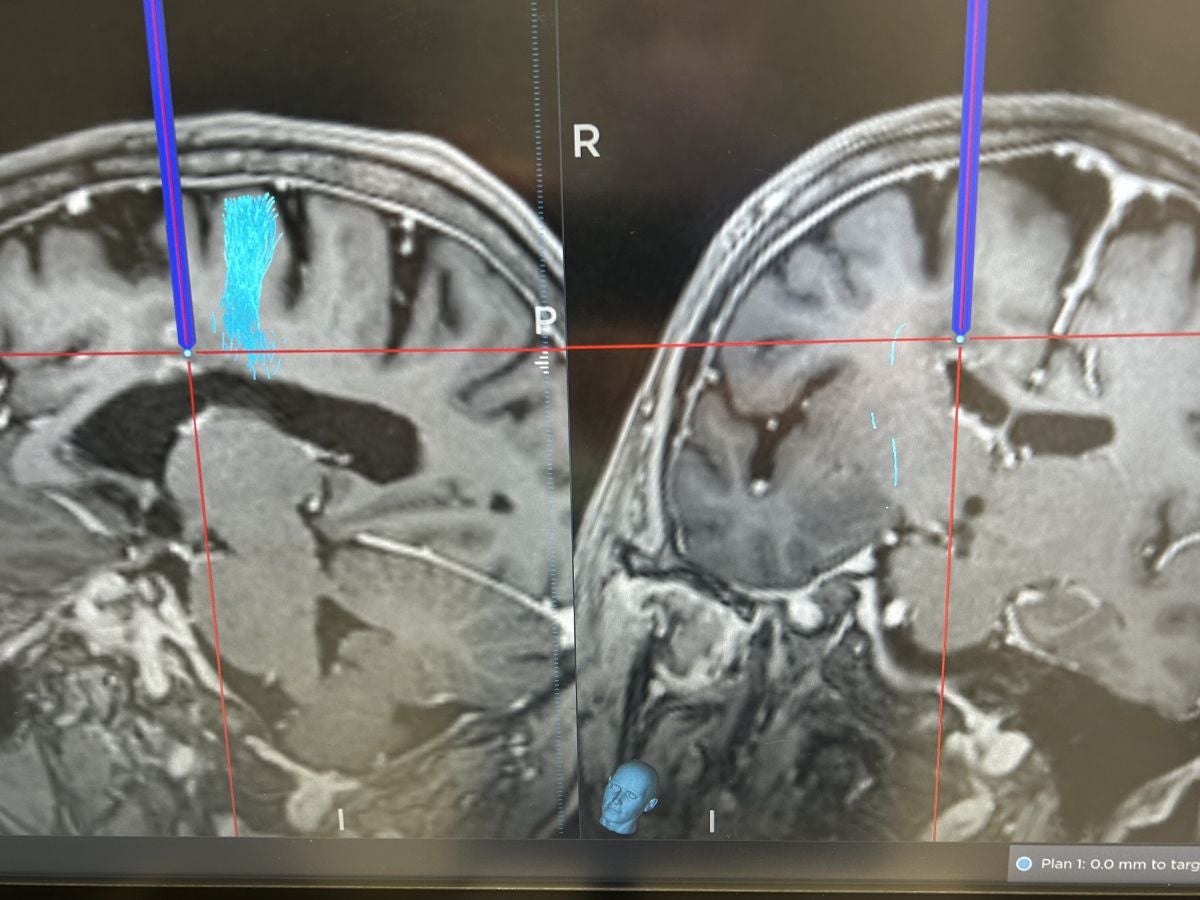Ascension Sacred Heart’s Comprehensive Stroke Center is the only center in the region utilizing a new artificial intelligence tool to improve stroke assessment and patient outcomes.
RAPID is advanced imaging software that is changing the way stroke specialists intervene in stroke treatment when there is a large vessel blockage that interrupts blood flow to the brain, said Dr. Terry Neill, medical director of the Comprehensive Stroke Center.
“The RAPID imaging technology quickly analyzes MRI and CT brain scans to generate color-coded map views of the brain that allow us to visualize the exact location of the clot and clearly determine which parts of the brain are salvageable and which are irreversibly damaged by stroke. These new capabilities give us greater confidence when selecting patients who will benefit most from acute interventional treatment, such as thrombectomy.”
The software processes the neuroimaging data in minutes allowing the stroke team to make an immediate decision on medical versus interventional treatment. The data is available through a phone application that has revolutionized the speed at which the stroke team can make these lifesaving decisions.
There’s a saying in stroke care: time is brain. Every minute treatment is delayed almost 2 million neurons are destroyed. Unfortunately, about 40 percent of people who go to the emergency room with stroke signs don’t know when their symptoms started, which poses barriers to treatment, Neill said.
Until recently, patients unsure of when their stroke symptoms began were not considered ideal candidates for a clot removal procedure called a thrombectomy. However, a landmark national study that validated the use of RAPID in aiding physicians selecting acute stroke patients led to a change in stroke guidelines.
“Thestroke treatment window now has been expanded from six to 24 hours after symptom onset to initiate interventional care,” he said. “This means we can potentially help people who may not have been candidates before.”
Treatment for ischemic stroke has evolved during the past few years. In the past, treatment relied on administering clot-busting drug to improve blood flow. Thrombectomy has opened new possibilities in stroke management. Interventionalists use a device called a stent retriever to remove a brain clot by routing it through a catheter in the groin to the brain’s blocked blood vessel. Research has shown that thrombectomy can double a patient’s chances of avoiding disability after stroke.
According to the Centers for Disease Control and Prevention, stroke kills about 140,000 Americans each year and is a leading cause of long-term disability. Around 87 percent of strokes are ischemic.
As the only Comprehensive Stroke Center in the region, Ascension Sacred Heart has the critical elements necessary to help patients achieve long-term success in their outcomes. The Comprehensive Stroke Center has specialized emergency room and transfer protocols which has allowed for the implementation of RAPID technology and other high-level stroke treatments across a large geographic region.
Last September, Ascension began deploying the infrastructure and software necessary to provide RAPID diagnostic capabilities in every Ascension facility that requested it. In the spring, the technology will be available in 66 Ascension hospitals.
For more information about the Comprehensive Stroke Center, call 850-416-2554.




